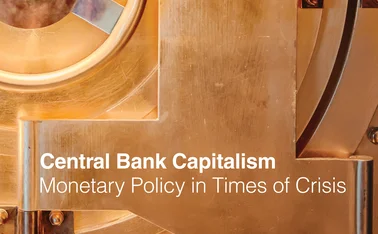
QE crowds out bank loans – NBER paper
Asset purchases generate “counterproductive” cut in lending to firms, authors find

The injection of bank reserves during quantitative easing (QE) leads to a “counterproductive” decline in lending to firms, new research finds.
William Diamond, Zhengyang Jiang and Yiming Ma note the effect of QE could theoretically go either way. Higher liquid assets could cut the risk of a run and increase banks’ ability to lend. But regulatory constraints like the leverage ratio could also mean that higher reserves limit banks’ lending capacity.
Time series data shows QE in the US is
Only users who have a paid subscription or are part of a corporate subscription are able to print or copy content.
To access these options, along with all other subscription benefits, please contact info@centralbanking.com or view our subscription options here: subscriptions.centralbanking.com/subscribe
You are currently unable to print this content. Please contact info@centralbanking.com to find out more.
You are currently unable to copy this content. Please contact info@centralbanking.com to find out more.
Copyright Infopro Digital Limited. All rights reserved.
As outlined in our terms and conditions, https://www.infopro-digital.com/terms-and-conditions/subscriptions/ (point 2.4), printing is limited to a single copy.
If you would like to purchase additional rights please email info@centralbanking.com test test test
Copyright Infopro Digital Limited. All rights reserved.
You may share this content using our article tools. As outlined in our terms and conditions, https://www.infopro-digital.com/terms-and-conditions/subscriptions/ (clause 2.4), an Authorised User may only make one copy of the materials for their own personal use. You must also comply with the restrictions in clause 2.5.
If you would like to purchase additional rights please email info@centralbanking.com test test test







